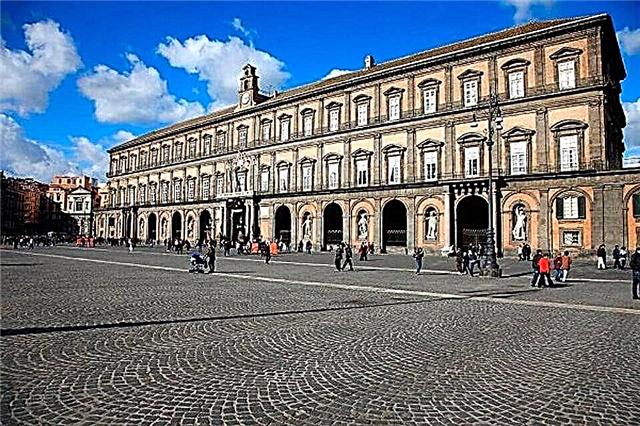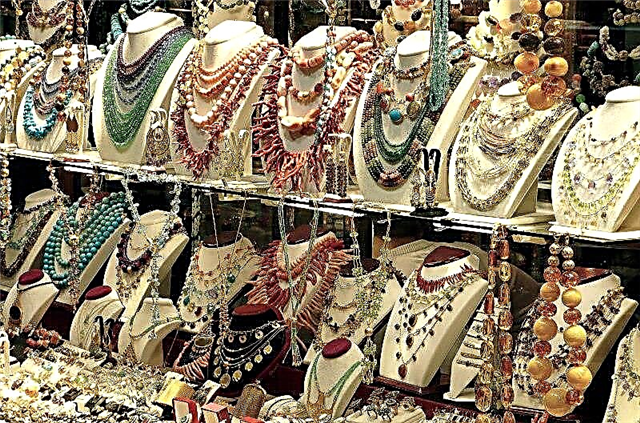The House of Invalids in Paris is not without reason considered one of the most popular and valuable sights of the French capital. The complex of grandiose buildings, located on the banks of the Seine, is a mirror reflecting the great architecture of the city of love and the history of the country that gave the world one of the greatest military leaders - Napoleon Bonaparte. The scale of the colossal development is impressive: the area of its territory is 13 hectares; the graceful spire of the dome dazzling with golden shine rises to 107 meters. More than 1.5 million tourists visit L'hôtel national des Invalides annually.
History
The House of Invalids owes its origin to the King of the Sun - Louis XIV, who decided to raise the prestige of the French army and provide the aged and crippled military men with a decent old age. In 1671, on the left bank of the Seine, where at that time there was a huge wasteland, the construction of a charitable institution began, the architect of which was Liberal Bruant.
The first veterans moved in after three years; the work was completely completed in 1677. Initially, it was planned that the social institution would accept six thousand people, but at the end of the construction it turned out that the building could not accommodate more than four thousand guests. By the end of the 18th century, the complex, which was created as a shelter, turned into a miniature city, which housed barracks, a hospital, refectory and a place for parades. In 1706, in the central courtyard, by order of the king, a basilica was built, the prototype of which was the Roman Cathedral of St. Peter.
The residents of the House observed almost military disciplinary requirements: there was a ban on smoking and alcohol in the premises, a prerequisite for staying was observance of the fast and the constant wearing of uniforms. The veterans, united in detachments, worked as best they could in craft workshops and took part in the guards. For non-observance of the rules, the guilty were subjected to punishments: from restrictions on food to expulsion.
Over time, the monumental complex of buildings began to acquire "civil" features: in 1777, the building took over part of the collection of relief plans, transported from the Louvre, and 95 years later the Museum of Artillery was opened. At the beginning of the 18th century, Peter I visited here. While living in the capital of France, the Russian tsar received an apartment on the second floor for full use.
Architecture

The complex of buildings is perfectly visible from the Seine embankment and the bridge erected in honor of the Emperor of All Russia Alexander III. From here, an esplanade leads to the House, the creator of which was Robert de Cot. The square is covered with lawns, a number of artillery trophies and French cannons.
The courtyard of the House of Charity, intersecting with the esplanade, creates the largest open space in the city, which also houses the buildings of the French embassies and the Ministry of Foreign Affairs. The Big and Small Palaces, located on the opposite bank of the Seine, complete the harmonious urban ensemble. The 196-meter front facade of L'hôtel des Invalides, which is an example of classicism architecture, is decorated with an arched portal with an engraved figure of the Sun King on horseback.
The entire complex consists of four-storey buildings that form fifteen courtyards, in the main of which is the architectural center - the baroque cathedral. Its round dome, decorated with a stylized image of war trophies and crowned with a lantern with a spire, dominates the entire system of structures. 12 kg of gold were spent on the restoration of the dome with a diameter of 27 m in 1989.
Cathedral of Saint Louis
In 1676, Louis XIV, who was not satisfied with the initial appearance of the chapel being erected in the central part of the complex of the House of Invalids, entrusted the construction of the church to Jules Hardouin-Marsart. The young architect managed to please the king. The façade of the basilica he created impresses with its symmetrical lines and graceful design that combines a circle and a square.
Its protruding central part is decorated with a monumental pediment, as well as Doric and Corinthian columns, giving the structure a symmetry and grace. The dome of the temple is visible from all the city hills. There is a small park near the parish, where colorful flower beds are in harmony with perfectly trimmed cones of shrubs.
Inside the cathedral is a Greek cross inscribed in a square. Behind the altar, the features of a soldier's church are discernible, overlooking the Main Courtyard. For better illumination, Arduin-Marsart used a triple dome system. A hole was cut in the inner part through which the painting of the middle dome is visible. Daylight entered the room through the third outer covering.
The central hall has four exits, corridors, ending in chapels, where the great people of France sleep in eternal sleep. Here the brothers of Napoleon, the son of the emperor, generals Bertrand, Duroc, marshals Vauban, Turenne, Leonte, Foch and the author of the Marseillaise Rouge de Lisle found their last refuge. The heart of the necropolis and the main attraction is the crypt designed by the architect Louis Visconti, in which Napoleon's ashes rest.
Tomb of Napoleon Bonaparte

In 1840, under the mourning sounds of Mozart's Requiem in the chapel of St. Jerome was solemnly brought in the coffin with the body of Napoleon, brought from the island of St. Helena. After 21 years, the remains of the emperor were transferred to the Cathedral of St. Louis and placed in a crimson sarcophagus made of Karelian porphyry. A complete block weighing 200 tons was presented to France by Nicholas I, stating that there will always be a stone for Bonaparte in Russia.
Inside the tomb rests the body of the great Corsican, dressed in a guards uniform; at the feet of the deceased lies his famous cocked hat. As conceived by the architect, the tomb is installed on a granite plinth and is located below floor level, therefore, in order to examine it and read the engraved inscriptions, visitors to the crypt are forced to bow their heads, saluting the emperor.
The eternal sleep of the commander is guarded by twelve marble statues of the goddess Nike. Next to the sarcophagus, two bronze Atlanteans, representing civil and military power, are serving in honor of the sarcophagus. In their hands is an orb, a crown and a scepter. The walls of the crypt are decorated with medals, certificates and weapons. Here is also the leader's sword, accompanying him during the battle at Austerlitz.
Museums
At the beginning of the 20th century, the Place of Charity for Retired Soldiers acquired the status of a museum object. Its collections include more than five hundred thousand exhibits related to important epochs in the history of France, as well as to the political, social and military life of the state.
Army Museum

This museum, created in 1905, gained worldwide fame by the fact that today it is the owner of the third largest collection of armor and weapons in the world in terms of the number of exhibits. The expositions are divided into the armory and the historical part, the halls are also divided into categories.
The Armory Gallery is an exhibition of knightly uniforms. Many armors look like they just returned from battle yesterday. The lobby displays items from the enemy arsenal, including samples of Russian weapons. Banners and flags are also exhibited here, the oldest of which are reproduced from surviving paintings. A special place is given to the armament of the countries of the East: Persia, Japan, China and India.
The historical hall evokes admiration for the interior - the ceiling is draped with a tent, which until 1900 belonged to the Chinese empress. Showcases keep Napoleon's personal belongings: his uniforms, furniture, a traveling box, stuffed animals of his beloved horse and dog. One of the most valuable exhibits is exhibited here - a posthumous cast of the face of the great commander.
Museum of the Order of the Liberation

The Order of Liberation is one of the most important state medals.In November 1940, General Charles de Gaulle awarded supporters of the French independence movement, who voluntarily stood up to defend the country, with a distinctive insignia - a rectangular bronze shield (30x33 mm) with an engraved Lorraine cross. The highest award was given to 1,061 people, including six women.
The history of the order and its knights became the basis for the creation of the Museum, located on an area of 1 thousand m2. The exposition acquaints visitors with weapons, banners, documents, walkie-talkies and uniforms of members of the brotherhood. In six halls and three galleries, 4 thousand original items have been collected.
Charles de Gaulle Museum
The Charles de Gaulle Museum is the youngest in the House - its opening dates back to 2008. The collection of exhibits, located on an area of 2,500 m2, is fully interactive. Tourists are greeted by a hall, the walls of which are decorated with 80 portraits of the first president of the Fifth Republic, then, in a spherical room, guests are invited to watch a film about this outstanding political figure. The picture is shown in eight languages.
De Gaulle's personal belongings, manuscripts and awards, animated archives and historical documents, split screens, videos, the total duration of which exceeds 20 hours - all this captures tourists from the first minutes of acquaintance. The premises are lined up here in a circle, visitors themselves choose the route they are most interested in.
Invalides today

The modern L'hôtel national des Invalides is one of the hallmarks of the French capital. In addition to visiting the cathedral, necropolis, historical monuments and priceless relics of museums, visitors do not ignore the gift shop, where you can buy a mug with the initials of Napoleon or a figure of the famous Corsican with a glass bell. At the entrance, all children receive an elegant hat of the great commander.
However, the architectural ensemble continues to perform the functions that were initiated by Louis XIV. The Home for Invalids has not lost its main purpose, and this is worthy of respect. Pensioners and veterans who have dedicated themselves to serving their homeland live here to this day. For the convenience of former soldiers and officers who are under the care of the State Institute of Disabled Persons, there is a hospital, a pharmacy and church services on the territory of the complex. In addition, the administration of the Parisian military commander's office is located within the walls of the palace.
Where is it located and how to get there
L'hôtel national des Invalides is located in the seventh arrondissement of Paris, one kilometer from the Seine River. There are two entrances: the southern one from Place Vauban and the northern one from the Esplanade of the Disabled.
It is very easy to get to the complex by public transport:
- train: line C to Invalides stop
- metro: lines 8 and 13 to Invalides, Latour-Maubourg and Varenne stations
- bus: lines 28, 63, 69, 82, 92 and 93 to the stop
Opening hours and ticket prices
The State House of Invalids accepts guests every day from 7:30 to 19:00 (on Tuesday - from 7:30 to 21:00). The doors of the museums are open for visits every day:
- from 01.04 to 31.10 - from 10:00 to 18:00
- from 01.11 to 31.03 - from 10:00 to 17:00 (until 17:30 during the Christmas holidays)
Days off: 01.01, 01.05 and 25.12. Every month on the first Monday, tourists are only allowed into the cathedral. In July and August, the visit to Napoleon's grave is extended until 19:00. A little trick: if you come to the ticket offices not in the morning, but in the afternoon, the waiting time in the queue will be reduced to 10-15 minutes. Tickets can be purchased 30 minutes before closing time.
The full rate is 12 euros, the reduced rate is 10 euros. The right of free admission is granted to children under 18 years of age, unemployed citizens of the European Union and journalists (upon presentation of an appropriate certificate), disabled persons and their attendants, military personnel in uniform.











